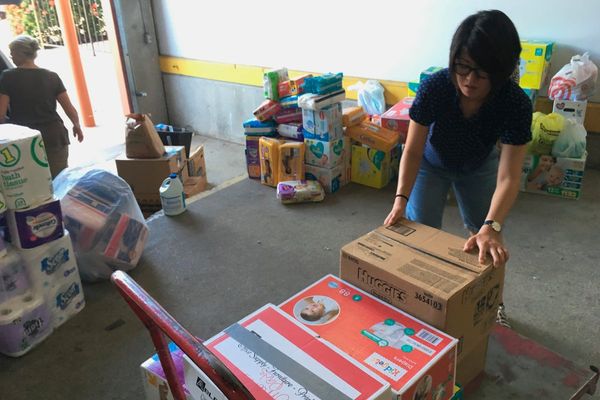Basics of depreciation
As a business owner, you can normally deduct business expenses in the year you incur them, but the rule is different for property you buy that is expected to last more than one year, such as buildings, machinery, and furniture. Normally, you can't deduct the full cost right away. Instead, you depreciate them or deduct the cost gradually over a number of years. Property that doesn't wear out, such as land, can't be depreciated.
Get every dollar you deserve with unlimited tax advice from experts who know self-employment taxes inside and out. Whether you’re a freelancer, independent contractor, small business owner, or have multiple streams of income, TurboTax Self-Employed can help you uncover the industry-specific deductions you qualify for. Plus, you can get up to an additional $20 off when you file with TurboTax Self-Employed.
For many kinds of business property, including computers and cars, special "accelerated depreciation" rules allow you to deduct a bigger share of the cost early on, assuming that an asset will decline in value more in the early years of use. Other assets, such as buildings, are depreciated evenly using a method known as straight-line depreciation.
Now that we have covered the basics, let's look at how you may be able to get the most bang for your buck tax-wise out of your business assets.
First-year expensing - Section 179 deduction
A special rule known as "expensing" lets small businesses write off the entire cost of certain depreciable assets in the year they are purchased.
In other words, you get to treat the cost as a business expense (hence "expensing"), such as salary paid or utilities, rather than an asset that has to be depreciated over a number of years. Property that qualifies for this tax break includes machinery, tools, furniture, fixtures, computers, software, and vehicles. (This special rule often goes by the alias "the Section 179 deduction" to give homage to the section of the tax law that allows it.)
This deduction is limited in several ways:
- Dollar limit. For assets placed in service during the tax year, you can take a maximum deduction of $1,050,000 for 2021.
- Investment limit. As a way to focus this tax break on smaller businesses, firms whose investment in new property exceeds a threshold amount gradually lose the right to expensing. The investment threshold is $2,620,000 for 2021. For example, if you purchased $2,720,000 of otherwise eligible equipment in the year, you can't expense more than $950,000 ($1,050,000 expensing maximum minus the excess investment of $100,000).
- Taxable income limit. Your total first-year expensing deduction cannot exceed your business's taxable income. Say, for example, that you bought $25,000 of property eligible for expensing in the year, but your firm's taxable income before taking expensing into account is just $20,000. That means your expensing deduction is limited to $20,000; you can carry over the disallowed $5,000 to next year and claim an expensing deduction then, assuming you have sufficient business income.
First-year expensing - Bonus Depreciation
Bonus depreciation, like Section 179 deductions, allows for accelerated deductions of all or some of the cost of assets as soon as they are placed in service. The rules changed in 2017 due to the tax reform legislation for assets acquired and placed in service after September 27, 2017. The old rules still apply for qualified assets acquired before September 28, 2017, and allow for a 50% bonus depreciation that could be taken in the first year while the remaining 50% of the asset cost is depreciated under the normal depreciation rules. These assets had to be purchased new, not used.
The new rules allow for 100% bonus "expensing" of assets in the first year that they are placed in service regardless of whether they are new or used. The percentage of bonus depreciation phases down from 100% in the first year starting in 2023 to 80%, 2024 to 60%, 2025 to 40%, and 2026 to 20%. After 2026 there is no further bonus depreciation. This bonus "expensing" should not be confused with expensing under Code Section 179 above which has entirely separate rules, see above.
The 100% expensing is also available for certain productions (qualified film, television, and live staged performances) and certain fruit or nuts planted or grafted after September 27, 2017.
50% bonus first-year depreciation can be elected over the 100% expensing for the first tax year ending after September 27, 2017.
Vehicles
Depreciation and expensing for that car or truck you use for business is a little trickier than for other types of business assets because IRS has special rules for vehicles.
No matter how much you pay, the standard depreciation first-year write-off for a new or used car or truck is $10,200 in 2021. (These figures assume 100% business use.)
Our TurboTax Live experts look out for you. Expert help your way: get help as you go, or hand your taxes off. You can talk live to tax experts online for unlimited answers and advice OR, have a dedicated tax expert do your taxes for you, so you can be confident in your tax return. Enjoy up to an additional $20 off when you get started with TurboTax Live.
Under the bonus depreciation rules, another $8,000 can be depreciated during the first year. The expensing is no longer limited to new vehicles. Used vehicles are eligible for bonus depreciation beginning in 2018.
In 2021, automobile depreciation limits are $16,400 for the second tax year; $9,800 for the third tax year; and $5,860 for each successive tax year until the cost is fully depreciated.
Dispositions of business property
If you sell business assets during the year, the deal may generate a taxable gain or a deductible loss. There also may be tax consequences if business property is exchanged, destroyed, stolen, abandoned, or condemned during the year.
If you're selling or exchanging property, your gain or loss is figured by calculating the difference between the amount you receive for the asset and its adjusted basis. The adjusted basis of the property is its original cost, minus any depreciation and expensing deduction claimed.
Generally, assets you own that are for personal use or held for investment are capital assets, and disposing of them generates capital gains or losses. But most of the assets you use in the normal course of business, including land and depreciable property, are treated as noncapital assets. They are called "Section 1231 property," after the section of the tax code that gives them favorable tax treatment, as explained below.
Section 1231 gains and losses
Types of assets that get this favorable treatment must be owned for more than one year, and include plant and equipment, timber, coal, iron ore, and certain livestock. Section 1231 gains and losses are reported on Form 4797: Sales of Business Property.
To determine the tax treatment, combine all your Section 1231 gains and losses for the year. If you end up with a net loss, that is treated as an ordinary loss and can be used to offset your ordinary income. If the result is a net gain, the gain is generally treated as a long-term capital gain, which is taxed at a lower rate than ordinary income. But the lower rate may not apply to all of your net gains.
Tax rules let the IRS recapture some of the depreciation deductions you have taken since you owned the asset. The recapture rules differ for real estate and equipment.
If you sell depreciable equipment at a gain, you must recapture either the depreciation and expensing deductions claimed on the asset, or the total gain, whichever is less. This recapture amount is then taxed as ordinary income, not as Section 1231 gain.
Tax-deferred asset dispositions
Exchanges. You can defer the gain on an asset disposition by trading your business real estate for a similar piece of replacement property. This is known as a like-kind exchange. Generally, the new property must be identified within 45 days and you must receive it within 180 days of disposing of the old asset. You don't pay tax in the year in which the exchange occurs. Instead, you reduce the tax basis of the replacement asset you acquire by the gain you deferred on the trade of the old asset. When you eventually sell the replacement asset, the amount of gain will be larger or the loss will be smaller based on the exchange.
Prior to 2018, exchanges were allowed for various asset types. However, beginning in 2018, exchanges are only allowed for real estate assets. However, if an exchange was started in 2017 it can generally be completed in 2018 under certain rules.
Installment sales. You will not have to report all of the gains on the sale of an asset at one time if your buyer pays you in installments, and you receive at least one payment after the year in which the sale occurs. If you receive payments equally over three years, for example, one-third of the profit would be taxable each year.
TurboTax Self-Employed will ask you simple questions about your life and help you fill out all the right forms. Perfect for independent contractors and small businesses. We’ll search for over 500 tax deductions to get you every dollar you deserve and help you uncover industry-specific deductions.







